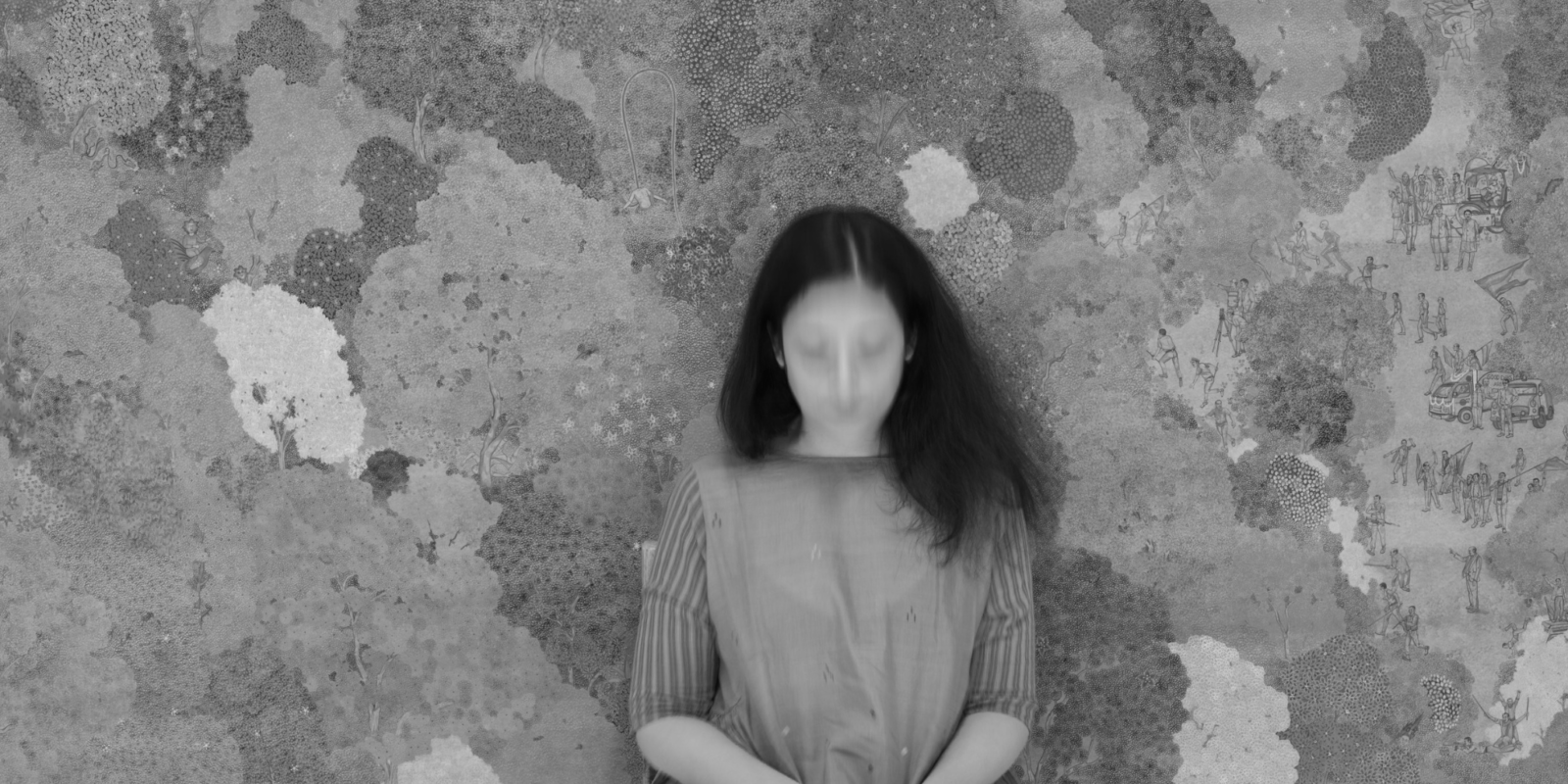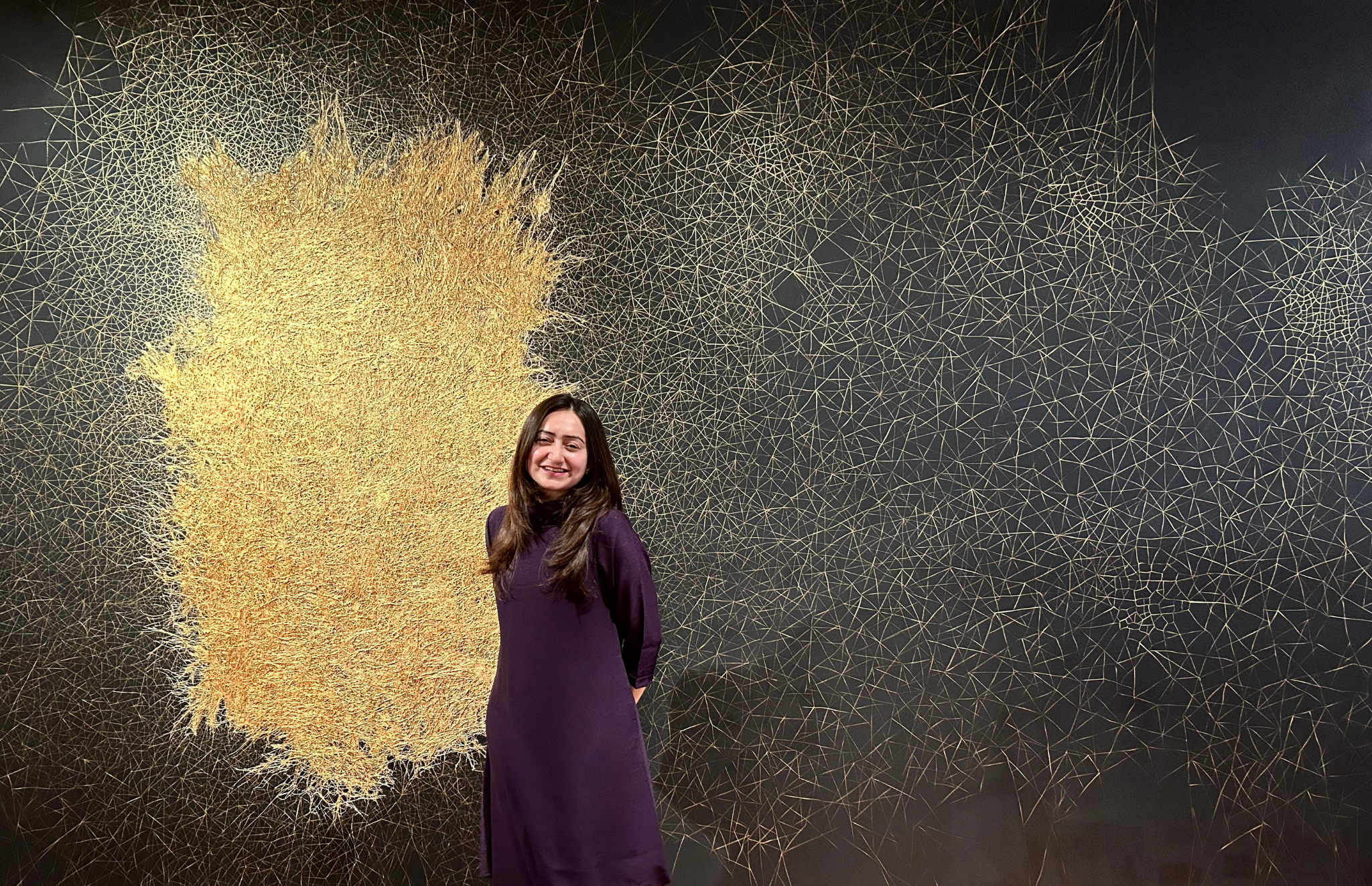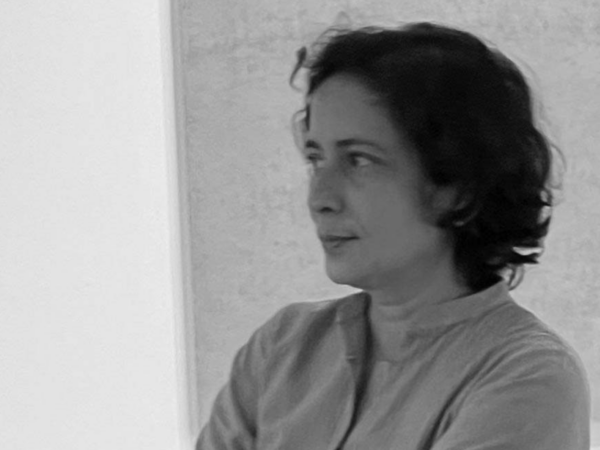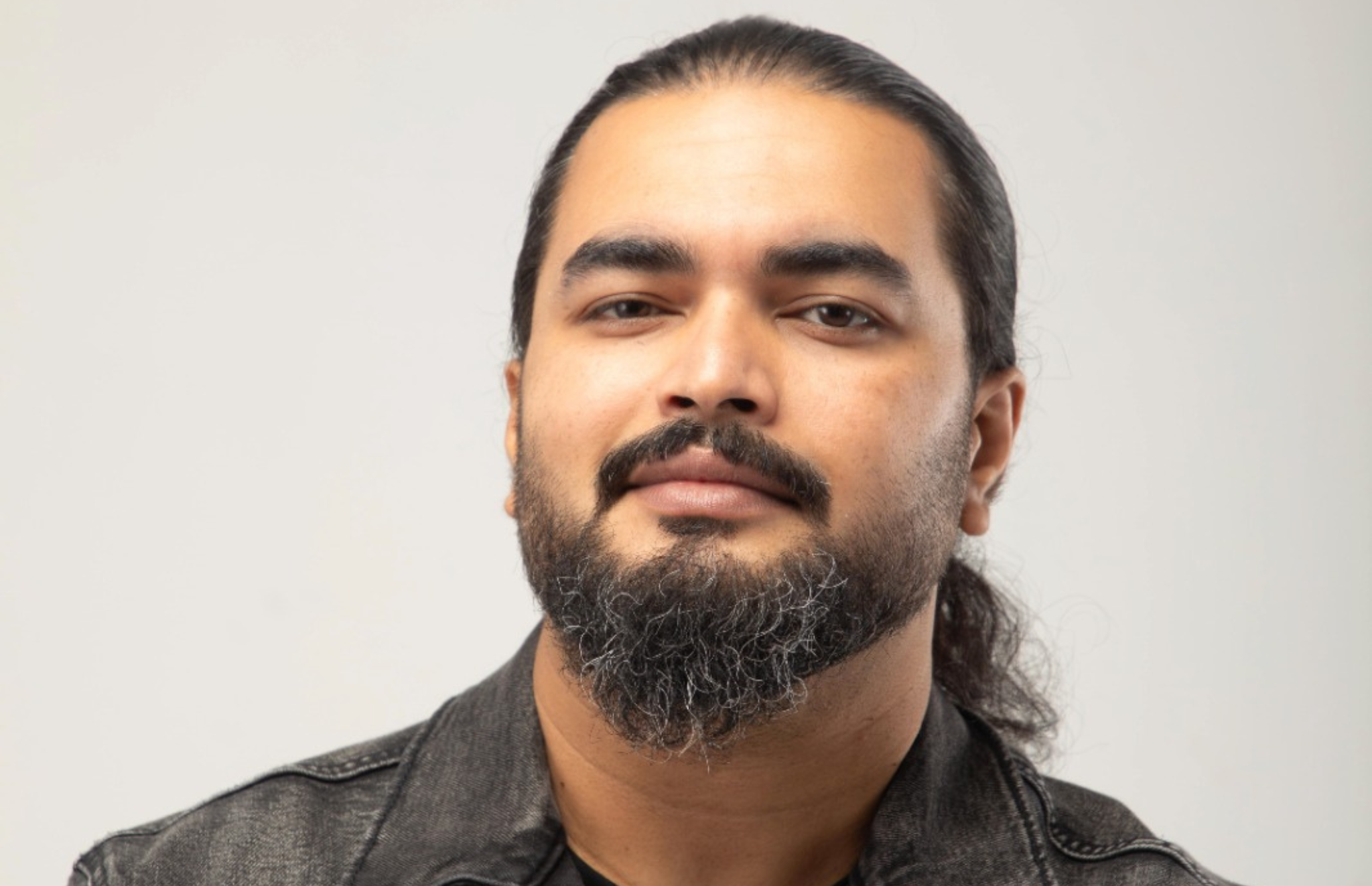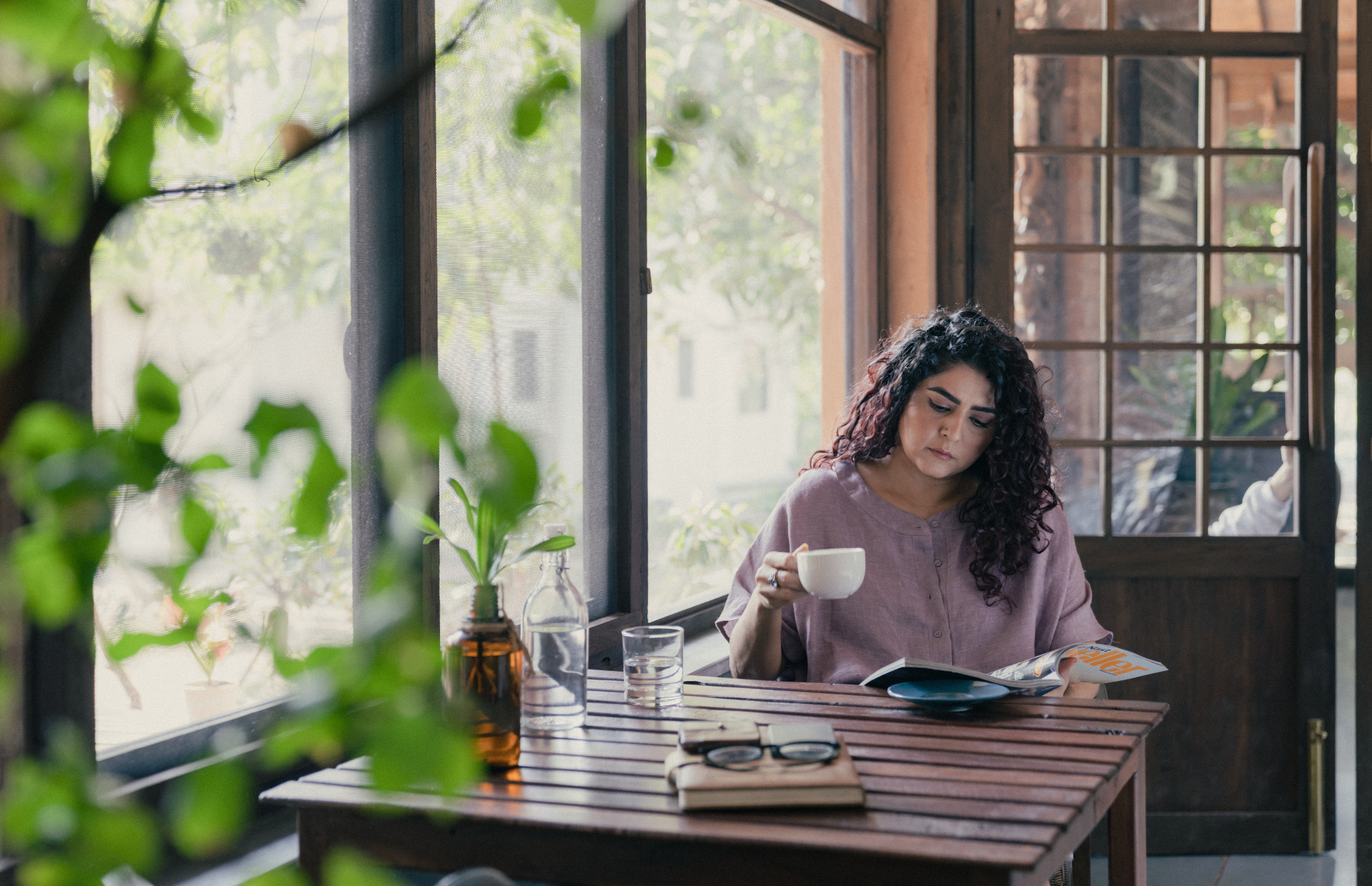Dr Varunika Saraf is an artist and art historian based in Hyderabad. Saraf has participated in several group shows such Makeshift Memorials, Small Revolutions, Blaffer Art Museum (2024),Sangam/Confluence, Heidelberger Kunstverein (2020), Critical Constellations, Foundation for Indian Contemporary Art, (2019), Days Without a Night, Max Mueller Bhavan,(2018), and Phantoms of Asia, Asian Art Museum (2012). She is the recipient of Asia Society’s Asia Arts Future Award (2023). In 2016, Saraf received the Amol Vadehra Art Grant. She was the Summer Research Fellow at the Getty Research Institute, Visiting Fellow at the Max-Planck Institute, Florence, NTICVA Visiting Fellow at the V&A Museum and the CWIT fellow at the Centre for South Asian Studies, University of Cambridge. Saraf holds a PhD and an MPhil from JNU, an MFA from the University of Hyderabad and a BFA from JNTU College of Fine Arts. In 2023, she participated in the Sharjah Biennale 15, where she received an honourable mention for her embroidered series, We, The People. Her works are currently on view at the Asia Pacific Triennial 15, Queensland Gallery of Modern Art. Saraf is represented by Chemould Prescott Road, Mumbai.
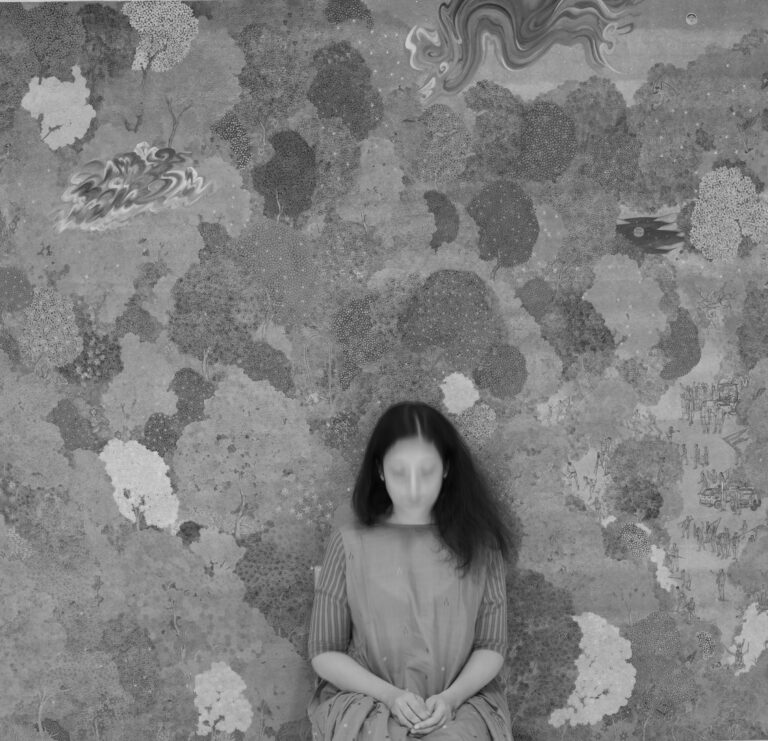
SP: How do you approach the idea of beauty in your art, especially when dealing with difficult or uncomfortable subjects? Could you please elaborate on this about a subject that you worked on?
VS: Beauty is an idea; both as a concept and an experience, it is subjective. Ideas of beauty have changed considerably over the centuries and vary across communities and societies. It’s not definitive and immutable. If we define it as something pretty and pleasing to the eye, then much of my work, especially on closer inspection, will not fit into this normative and simplistic interpretation. Some might even consider my work disturbing. I make aesthetic and political choices informed by research into art history and engaging with historical modes of picture-making. I am deeply invested in material processes, like creating wasli with layers of paper, and grinding watercolours from pigments chosen diligently for their luminosity and lightfastness.
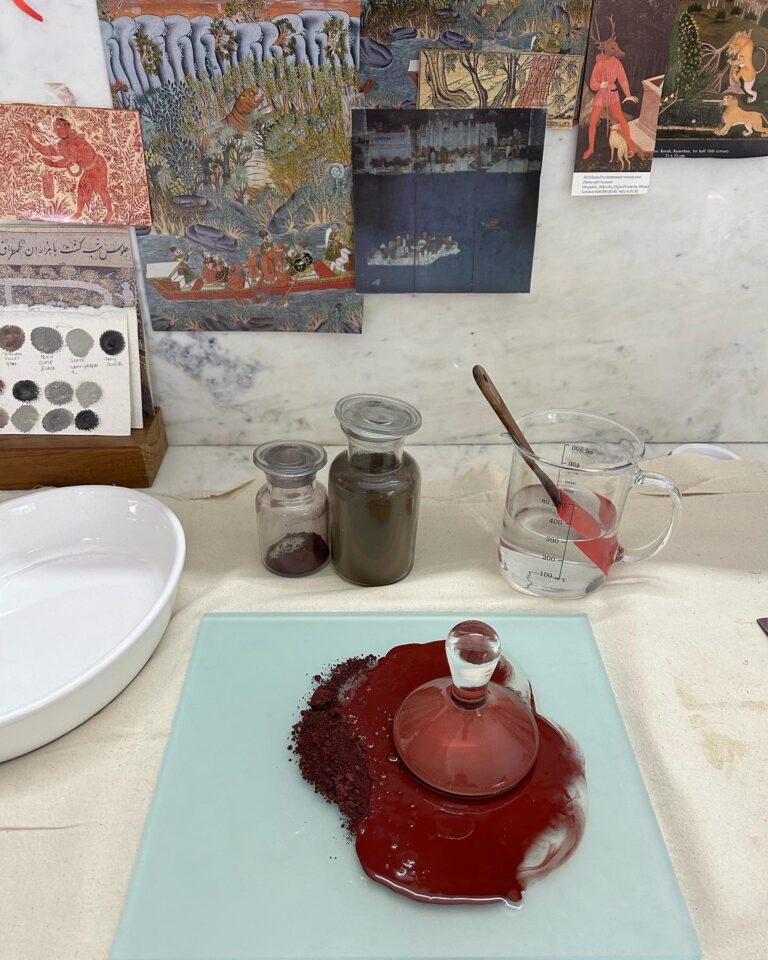
Photo courtesy: Varunika Saraf
These kinds of intentional and subversive tactics make the complex and disturbing conversations palatable. Nevertheless, the more pertinent question we must ask is: what do we mean when we talk about beauty? My subjective response to this would be that beauty is a political act that entails empathy and honesty. It does not lie in the material processes and aesthetically pleasing outcomes; it results from creating provocative works that unflinchingly and honestly represent our world and look at it for what it is. In as much, a truly beautiful work, in my opinion, engages both the heart and the mind.
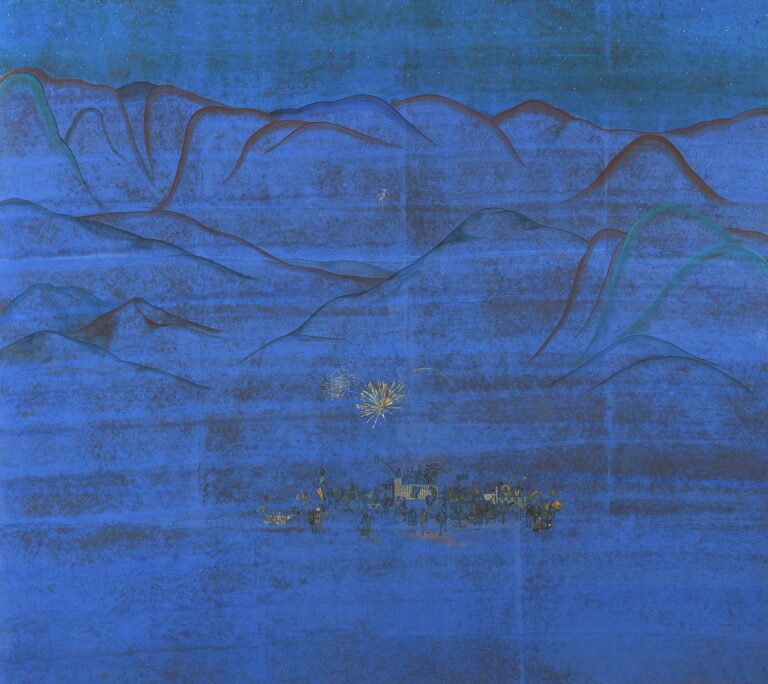
Photo courtesy: Varunika Saraf
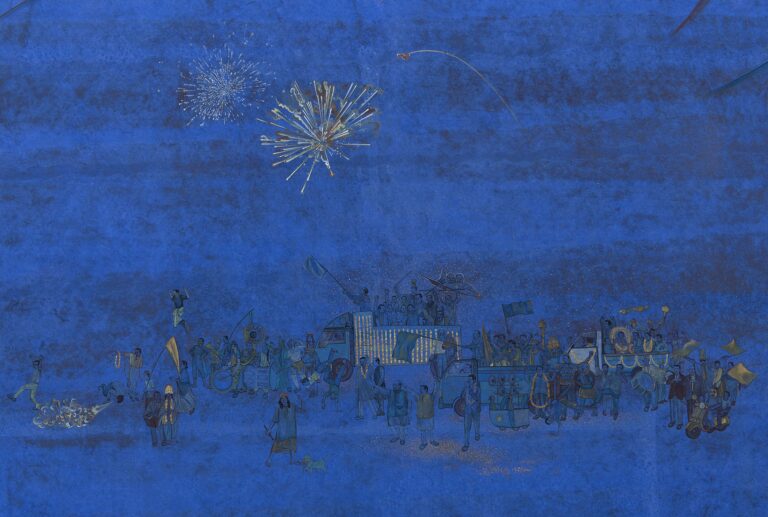
Photo courtesy: Varunika Saraf
SP: Could you give an insight into the nature of your artistic process, how you draw inspiration from historical materials and popular culture, and how you incorporate them into a conceptual dialogue with the past?
VS: When I turn to history, I do so solely to better understand our world and to analyse the antecedents of contemporary political and social issues, particularly the exponential rise of violence. For a while now, I have been taking my cue from Eduardo Galeano, who implores us to “search for the keys in the past history to explain our time.” His advice has helped me chart some of the fissures and fault lines that structure our society. Every so often, this entails engaging with historical visuals and images from mass media; these serve as references to a particular time or a specific mode of thinking/making.

Photo courtesy: Varunika Saraf
SP: You’ve been using the Mughal technique of wasli in your practice — what prompted you to adopt this traditional method? How do you view its progression in your work over time?
VS: Since 2001, I have dedicated a significant amount of time to experimenting with the Mughal technique of making wasli. This involves binding sheets of paper together to create a surface that can hold several washes of colour. I adopted this traditional method because I needed a surface that allowed me to layer washes of colour and drawings seamlessly over each other. Over time, I’ve evolved this technique, surpassing the original size and intent of the traditional wasli and pushing the scope of the method to the extreme. As a result of years of experience, I can now create a wasli practically in any size.
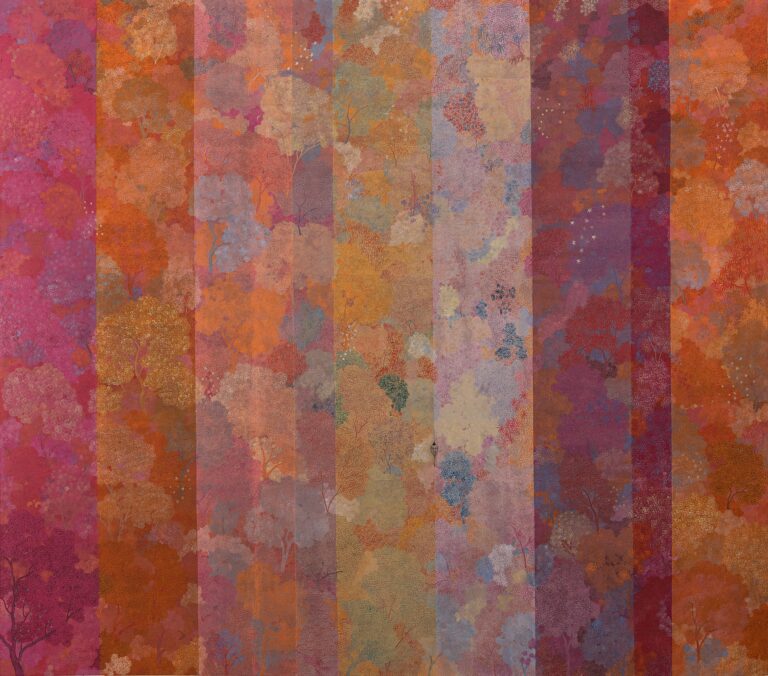
Photo courtesy: Varunika Saraf
SP: What do you see as the artist’s role in documenting or interpreting the societal shifts of our time?
VS: My practice is deeply committed to documenting societal shifts, particularly the roots of violence in our society. This commitment stems from the vision for an egalitarian world. I use my art to highlight everything that hinders us from fulfilling our progressive potential and in the hope of contributing to a more just society.
SP: From solo shows to group shows, could you take us through your creative process? Are there projects that hold special meaning for you, and if so, what are they? How did that help you develop your artistic eye and obtain a new perspective?
VS: Solo shows allow artists to present work in the full scope of the research they entailed. My first solo show was held in 2008, and the last was in 2021. All have been extremely rewarding, more so now in retrospect because they allow me to map my growth and trajectory, which is essential to evaluate and determine the direction one has to take.
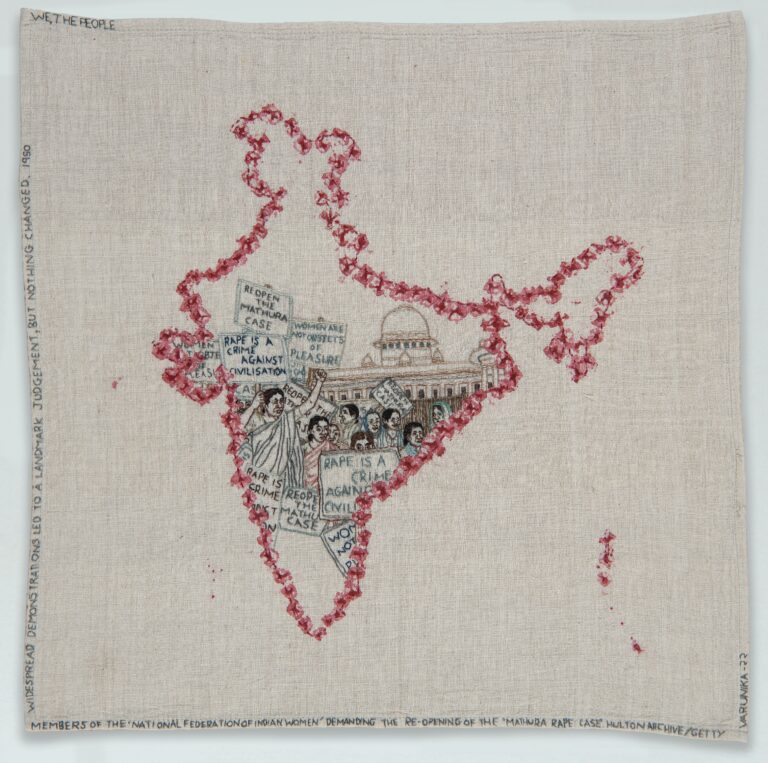
Photo courtesy: Varunika Saraf
Group shows, on the other hand, are heartening as they require practitioners to hold space for collaborations. They present the radical possibility of building a wider community of care and allyship, forging conversations and collective action. This aspect is quite beautiful, though somewhat unrealised. We must each think about what sort of a community we would like to foster and how our practices can be in a conversation with each other. Group shows give you a sense of belonging and camaraderie, which is essential, especially if one’s practice entails long hours alone in the studio. Otherwise, it’s easy to feel isolated. Among the projects, “We, The People”, a set of 76 embroidered pieces I created for the Sharjah Biennale, holds special meaning as it was the realisation of long-held beliefs and research.

Photo courtesy: Varunika Saraf
SP: In what ways do you hope your work will engage viewers, particularly in terms of prompting them to reflect on the contemporary political and social issues you address?
VS: Your question preempts my answer. I hope my work will engage viewers by nudging them to reflect on the world we inhabit. I paint with the aim of joining a broader call to action to unmake the future that current events, such as political corruption, social injustice, and environmental degradation, have set into motion. And this is precisely the challenge: finding appropriate devices to engage viewers to introspect and critically analyse.
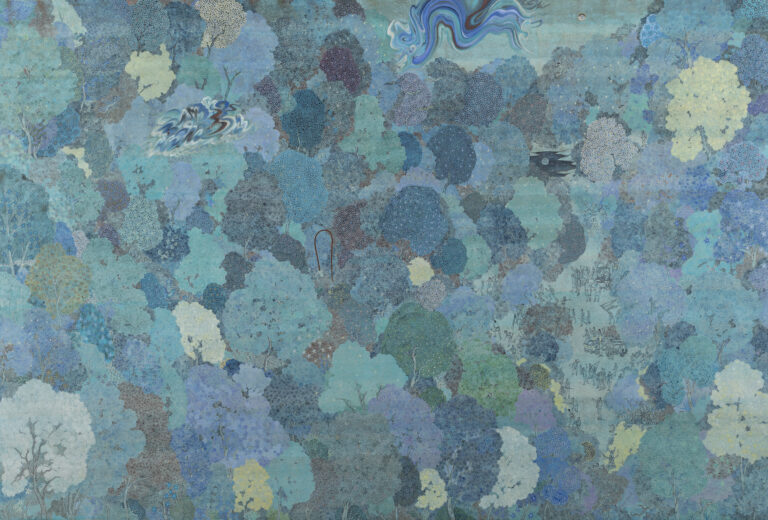
Photo courtesy: Varunika Saraf
SP: What advice would you like to give young emerging talent trying to find their voices in art?
VS: Young practitioners sometimes feel the need to make artworks that they perceive as ‘having a market.’ I advise them to stay fiercely faithful to their artistic vision and not be swayed by market trends. Your voice is unique; letting it shine through your art is essential.
Image Courtesy: Varunika Saraf
Find out more about the artist and her works: https://www.varunikasaraf.com/

